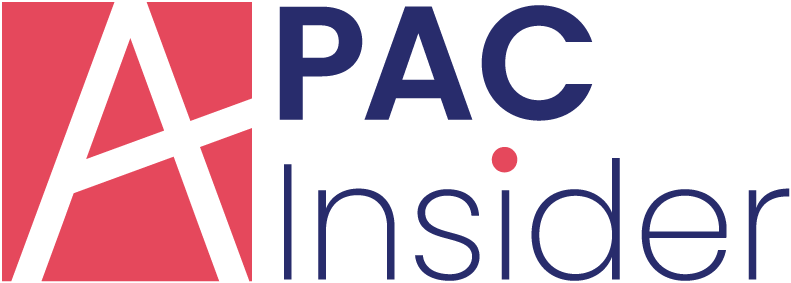
The insurance industry is entering yet another turbulent period after having recovered from the COVID-19 pandemic decline. The unstable macroeconomic and geopolitical landscape, rising inflation rates, currency fluctuations, and the threat of a global recession will likely hinder growth and profitability in the years to come.
To withstand these uncertainties, insurance companies have to look for technology solutions to enhance operation’s efficiency and reduce costs. One way to achieve this is to implement robotic process automation (RPA) to handle repetitive, time-consuming tasks and free up employees’ time for more valuable work.
More and more insurance companies are reaping the benefits of RPA. In fact, Aite-Novarica Group’s research shows that about 50% of the insurers surveyed deployed RPA in 2021.
This article explores the opportunities RPA brings for insurance firms and the nuances of a successful RPA implementation.
Why adopt RPA in insurance
Robotic process automation involves the deployment of software bots that emulate human actions while performing labor-intensive and oftentimes back-office functions, such as filling out forms or sending emails.
These digital helpers are times faster and more precise than humans. According to UiPath, one of the top RPA vendors, implementing RPA in insurance can help achieve 100% accuracy in data entry, 50% shorter call times in customer service call centers, and significant cost savings.
What RPA bots can do in insurance
RPA solutions for insurance are pretty versatile and can take different forms based on the purposes for which they are developed and implemented. For example, basic bots can handle routine, rule-based tasks like moving files and extracting data from structured documents.
For more complex insurance tasks, RPA can be combined with artificial intelligence, machine learning, and optical character recognition tools to recognize information in scanned or handwritten documents, consolidate data, and make decisions.
However, such enhancements are not always necessary because the insurance industry is highly bureaucratized, with many processes based on the “if-then” logic. Therefore, even the most simple RPA configuration can make a significant difference, especially when it comes to tasks like:
- Extracting policyholder information from different sources
- Data entry into corporate systems
- Moving data from spreadsheets to core systems and vice versa
- Checking the coverage period and other key information
- Generating invoices or extracting data from them
- Filling out accident reports
- Providing quick approvals
Because RPA is a non-invasive technology and doesn’t require modification or replacement of your existing corporate systems, the above processes can be automated fairly easily and at a low cost.
5 use cases for RPA in insurance
The scope of RPA application in insurance is steadily growing. According to PwC’s 2019 Actuarial Robotic Process Automation survey report, RPA’s most popular use cases in insurance mainly involve data handing and reporting processes, such as sending outputs and running Extract-Transform-Load steps.
Let’s look at some of the insurance processes that RPA can automate most effectively.
1. Claims registration and processing
Claims handling is probably one of the tensest moments between customers and insurers, as this is when the customer asks for compensation after an unfortunate event like a car accident. Therefore, companies must manage the situation as quickly and efficiently as possible to provide a great customer experience.
However, manually entering customer data into the corporate database or sending quotations is challenging and time-consuming. In addition, manual processes are typically error-prone because data comes in various formats from different sources, like damaged asset images and medical certificate scans. Besides, data collection is often delegated to outsourced personnel, increasing the number of steps and intermediaries and, consequently, the error rate.
If these tasks are delegated to bots, insurers can significantly speed up data extraction from customer correspondence and matching it with the relevant claim forms, saving many person-hours and reducing costs.
Moreover, bots’ performance can be improved through integration with artificial intelligence or computer vision, which broadens the range of sources from which data can be extracted, including photos and videos.
2. Underwriting
The second business function where RPA bots’ data extraction and processing capabilities can make a difference is underwriting. This process involves analyzing various data sources to assess risks and provide clients with relevant insurance policies and premium rates. Typically, the whole process takes up from two or three weeks.
RPA can significantly accelerate decision-making for underwriting by automating data collection and entry and reporting. Bots can also extract information from application documents, update information in clients’ profiles, and assess risks for new applicants.
Moreover, bots can be enhanced with artificial intelligence for deeper analytical skills. ML algorithms can analyze historical data, detect patterns and relationships between them, and predict customer exposure with an increasing accuracy, delivering a more precise and personalized estimate of insurance premiums.
3. Policy administration and servicing
Policy administration can be a bottomless pit of the insurance bureaucracy, which makes it a perfect match for RPA automation.
Before the RPA technology emerged, insurance agencies used insurance policy administration systems to manage policies more effectively. These tools have certainly proved useful, but they are also quite expensive to maintain and update. Furthermore, they can’t be scaled quickly enough to meet constantly growing customer demands.
This is where RPA comes into play. Faster, more efficient and scalable than humans, RPA bots can collect customer registration data, update accounts, cancel policies, and classify cases by type. Released from these tedious and high-volume tasks, staff can focus on functions demanding human judgment and interact with customers more.
4. Accounting
Accounting and fiscal tasks require a lot of time and attention from employees, while the cost of an error can be pretty high. In contrast, RPA bots can prepare tax reports, issue invoices, and process payments much faster and with remarkable accuracy.
It’s worth mentioning that many administrative activities must comply with specific regulations, especialliy if they deal with sensitive issues such as personal data or taxes. In this case, untiring bots can also extract data and fill in accounting forms and regulatory documents with the same swiftness and accuracy.
5. Customer service
Another application of RPA in insurance relates to customer service, and it can be considered a direct consequence of all the previous use cases. After all, by speeding up business procedures, enhancing operational efficiency, and reducing error rates with RPA bots, insurance companies can simultaneously improve the overall quality of customer care and increase customer satisfaction.
RPA implementation tips for insurers
Insurers can maximize the positive impact of RPA and further expand the spectrum of bots’ applications by considering the following factors.
Corporate culture
Many managers are not yet ready to delegate crucial tasks to bots. RPA adoption champions should convince them one small step at a time by gradually implementing RPA and demonstrating its positive results.
Combination of RPA tools with other technologies
Artificial intelligence is undoubtedly the primary candidate for collaboration with RPA as it can provide greater analytical capabilities for bots.
Staff upskilling
With repetitive manual tasks delegated to bots, companies can allocate human employees to more motivating and high-value jobs or customer care, which can require additional staff training.
Final thoughts
Adopting RPA to streamline back-end operations is a great step towards more efficient operations for insurance companies of all sizes. Bots help insurers process customers’ claims faster and with fewer mistakes, improve compliance and customer care, and reduce expenses. RPA’s flexibility, ease of integration with the existing systems, and automation it brings make the technology an ideal solution for insurance companies that want to drive a sustainable, long-term growth.




















